National emergency: How Trump's 'wall' could actually be built after his 'VETO!'
This post was updated on 03/14/2019.
The fight over U.S. President Donald Trump’s demand for a border wall led to a 35-day shutdown from Dec. 22 to Jan. 25 and an ongoing national emergency that the president declared on Feb. 15.
On Thursday, 12 Republican senators voted against the President to overturn the emergency declaration, with Mitt Romney (R-Utah) and Marco Rubio (R-Fla.) among them. President Trump responded to the vote with a single-word tweet: "VETO!"
The Senate would need a total of 67 votes to overturn a veto, which is unlikely, meaning that Trump could move forward with the national emergency — for now at least.
“Declaring a national emergency to obtain funding for a border wall that was not appropriated – and was in fact rejected and now rebuked – by Congress is an act of constitutional subversion," Stuart M. Gerson, former assistant attorney general to President George H.W. Bush, said in a statement provided to Yahoo Finance.
"Even if the President vetoes the resolution, the message sent by Republicans and Democrats in Congress is that the President’s attempts to usurp power from the legislative branch will not go unchecked,” Gerson added. “This is more for the courts to consider as they weigh legal challenges to the President’s unconstitutional acts.”
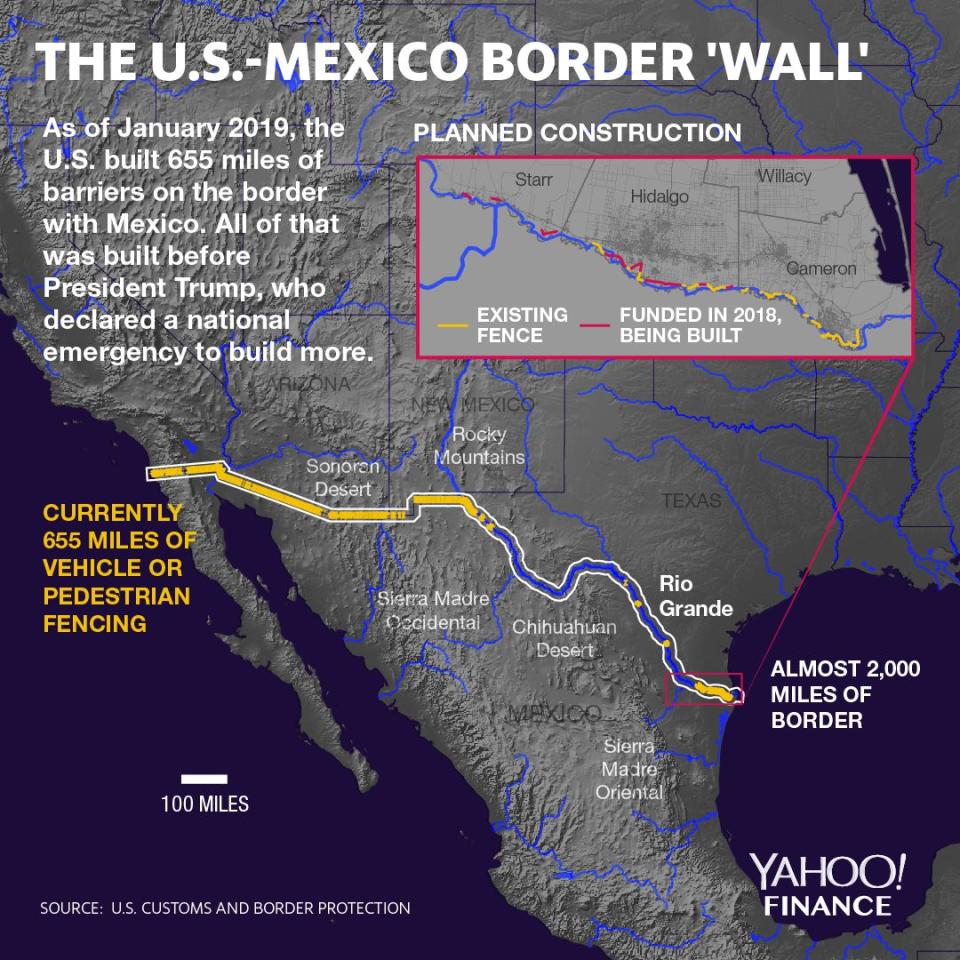
‘Mexico will pay for the wall’
In 2016, then-candidate Trump asserted that his wall “is going to be a real wall, it’s going to be a high wall, it’s going to be a beautiful wall,” and it would cost “maybe $10 or $12 million dollars.” He also promised that "Mexico will pay for the wall - 100%!”
In reality, President Trump’s wall is not a wall at all — the eight concrete and steel wall prototypes were recently demolished — but instead an extension of the barriers erected by previous presidents. Furthermore, Trump will attempt to use at least $8 billion in taxpayer dollars for the project.
Nevertheless, the Trump administration currently has the funds and the capability to build what would effectively serve as a ‘wall’ on America’s southern border.
Clinton, Bush, Obama, and now Trump
Several presidents prior to Trump — both Democratic and Republican — had a hand in building the border barriers that currently exist.
During Bill Clinton’s presidency, in 1993, Clinton approved Operations Safeguard and Hold the Line, “which authorized the construction of fencing along the border in Arizona and Texas respectively.”
Operation Hold the Line, based out of El Paso, Texas, involved agents and technology being focused in specific areas. As a result of the program’s success, Border Patrol expanded it to San Diego.
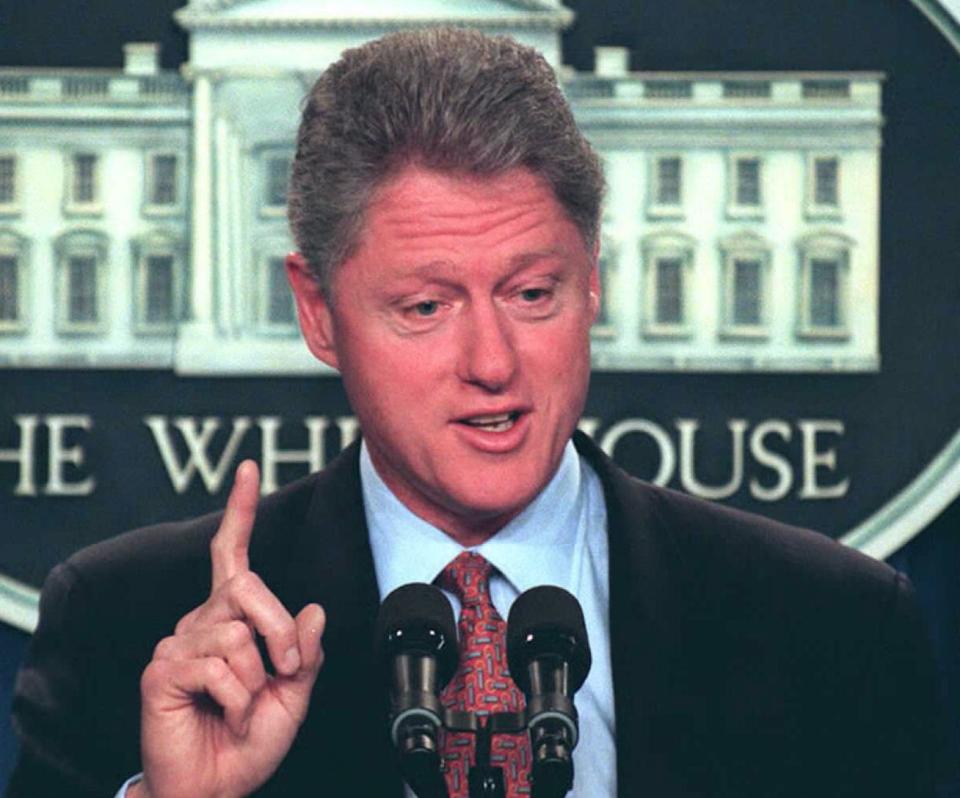
Clinton did that through Operation Gatekeeper, which allowed “for the construction of fencing along the border in California.” All the while, Clinton spoke out about curbing illegal immigration.
“All Americans … are rightly disturbed by the large numbers of illegal aliens entering our country,” he said in 1995. “That’s why our administration has moved aggressively to secure our borders more by hiring a record number of new border guards, by deporting twice as many criminal aliens as ever before, by cracking down on illegal hiring, by barring welfare benefits to illegal aliens.”
CPB asserted that the subsequent Operation Gatekeeper “reduced illegal entries in San Diego by more than 75% over the next few years.”
The George W. Bush administration followed Clinton with the Secure Fence Act, which was approved by Congress in 2006.
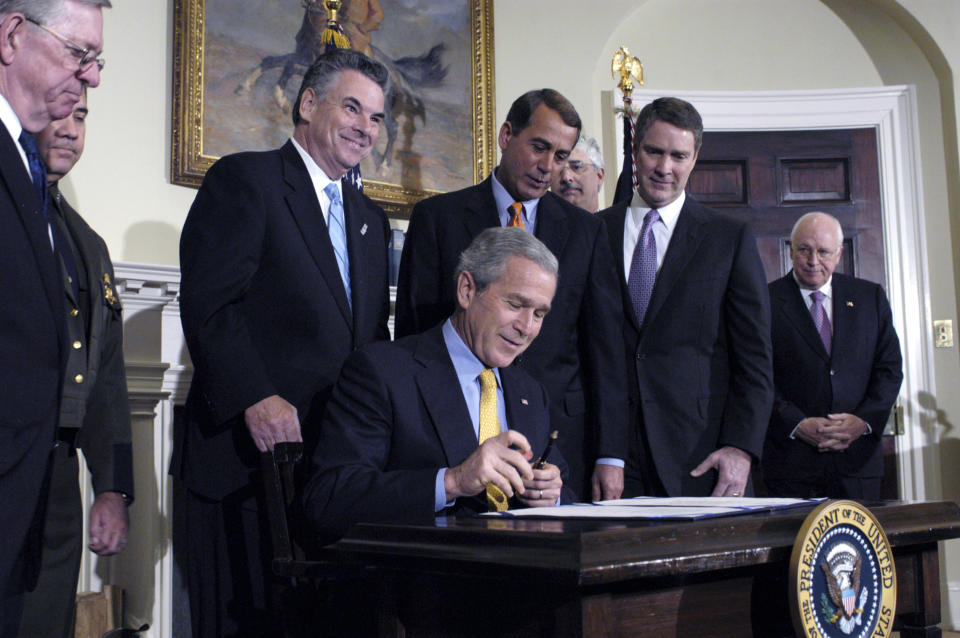
The legislation called for 700 miles of at least two layers of reinforced fencing on the border, in addition to “the installation of additional physical barriers, roads, lighting, cameras and sensors” in California, Arizona, New Mexico and Texas.
However, the Department of Homeland Security pushed back on the Secure Fence Act by arguing that it was impossible to construct the same type of fencing across the diverse terrain. The following year, the DHS obtained Congress’ approval for discretion over where the fencing was needed.
Bush also passed the bipartisan Real ID Act which gave “vast and arbitrary powers to the Department of Homeland Security … and total discretion in waiving any U.S. laws that stand in the way of wall and barrier construction along the southern border.”
Consequently, when President Obama took office in January 2009, the border wall construction project was more or less on autopilot. The Obama administration contributed to the project by cutting some costs.
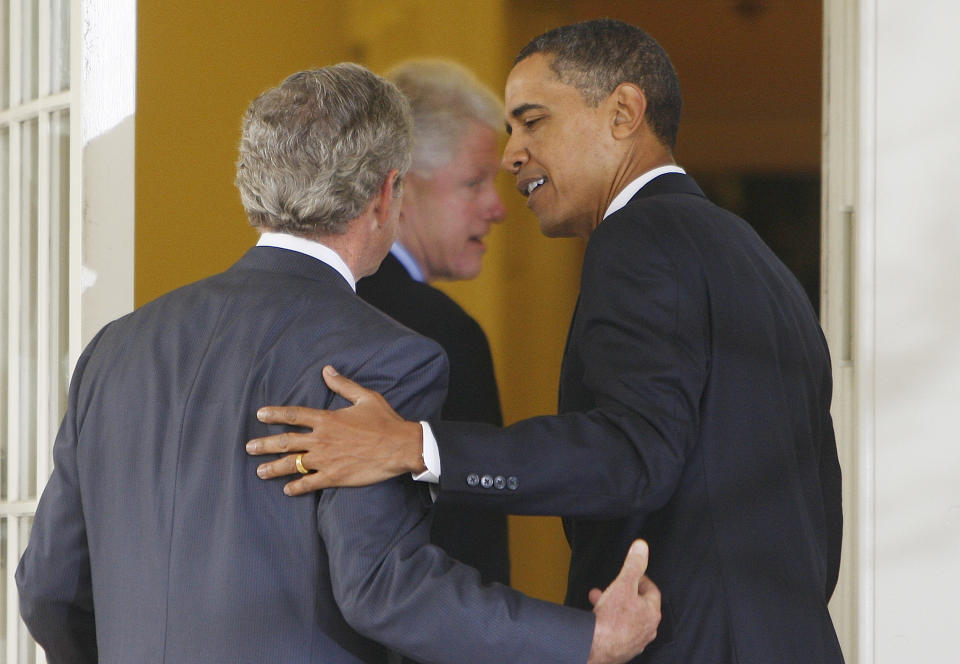
Obama eliminated the “virtual fence” along the Mexican border that used technology such as video cameras, sensors, and radars to patrol the border. The system had cost nearly $1 billion but covered only 53 miles in Arizona.
Instead, the DHS began using “commercially available surveillance systems, unmanned aerial drones, thermal imaging, and other equipment.” The DHS projected that it would cost the country a lot less — under $750 million — to cover the remaining parts of the Arizona border, which was roughly 323 miles.
Trump’s march to 1,000 miles
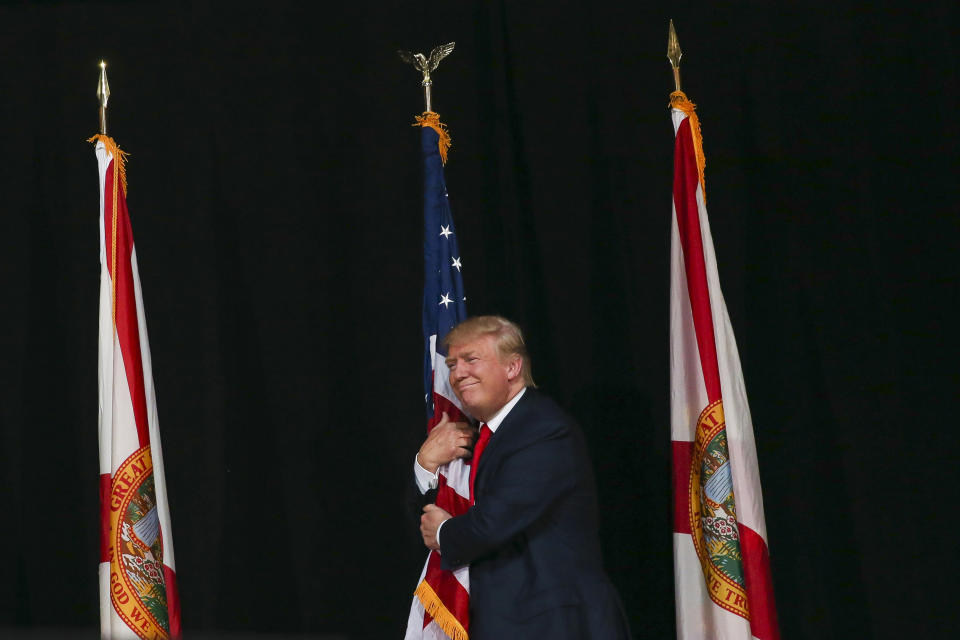
No new miles of border barriers were built during the first two years of the Trump administration, though Congress passed a $1.3 trillion spending bill in March 2018 that included $1.57 billion for border fencing and related costs.
At the time, CPB stated: "When fully funded, about 1,000 of almost 2,000 of the U.S. border with Mexico will have border wall and other critical infrastructure."
A CPB official told Yahoo Finance that new installments are expected to be built in “a variety of locations through the [southwest] border, but the current priority are high-traffic areas like the Rio Grande Valley.”
The spending bill money covered 33 miles of new fencing (as well as the replacement of some old fencing as well as secondary fencing). That construction is currently beginning around Mission, Texas, bringing the total estimated length of barriers to 688 miles.
In the fall of 2018, Trump demanded $5.7 billion in additional funding to build a “big, beautiful wall” amid Democratic opposition. Political gridlock ensued, resulting in a 35-day partial government shutdown in late December and most of January 2019.
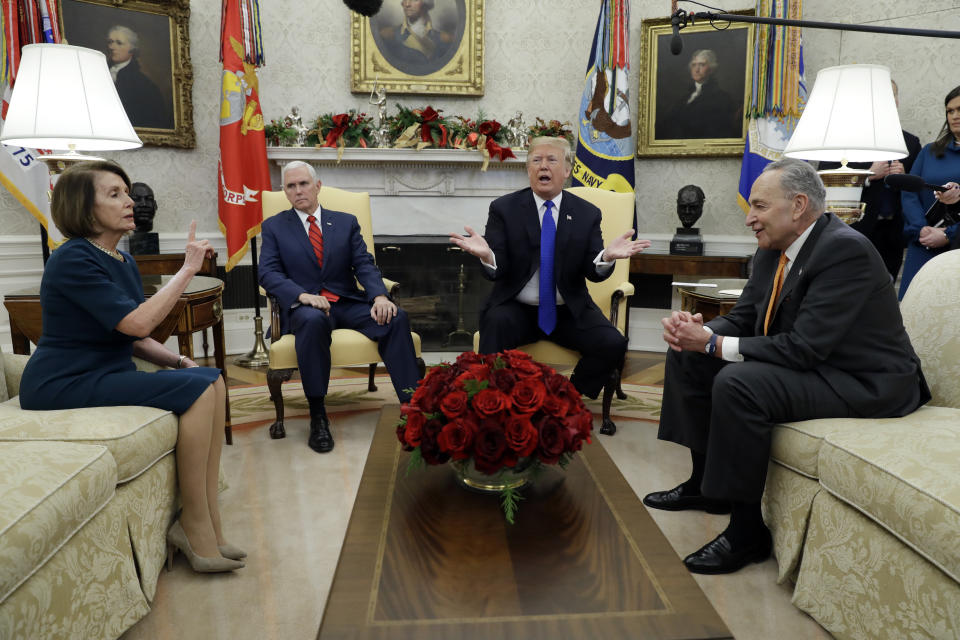
The costly shutdown led to Trump signing a bill to fund the government through Feb. 15. Congress then approved an additional $1.4 billion for border building — which would cover 55 miles of new fencing and bring the total to 743 miles — before Trump declared a national emergency and secured roughly $6.6 billion in additional funding.
That extra money includes $3.5 billion re-allocated from the Department of Defense’s (DOD) military construction projects, $2.5 billion from the DOD’s counterdrug fund, and $600 million from a Treasury Department fund.
Based on Yahoo Finance’s calculations, if all costs remained relatively equal at about $25 million per mile of new fencing, the Trump administration could fund CPB to build at least 260 miles of new border barrier.
That would bring the estimated total amount of border fencing to 1,003 miles, which would meet CPB’s goal of about 1,000 miles of “border wall and other critical infrastructure."
In this way, by extending the work of previous presidents and using a national emergency to hammer through the rest of the border building, Trump could declare that he fulfilled his signature campaign promise of constructing a “wall.”
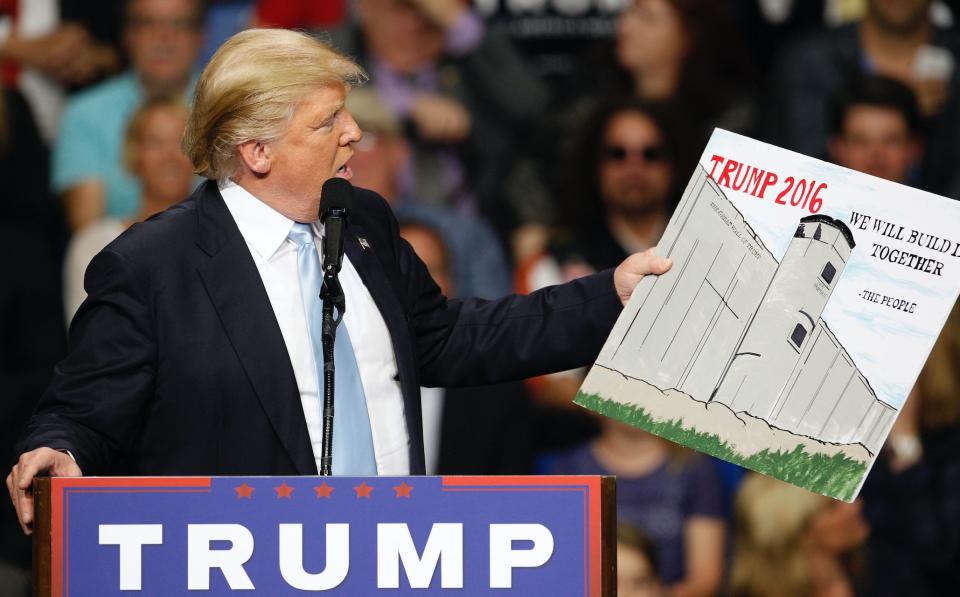
‘Land owners sued the federal government for a variety of violations’
Trump’s national emergency gambit faces opposition.
On Feb. 18, 16 states filed a lawsuit to stop Trump from using his emergency powers to build the wall. The Thursday vote confirms the states’ clear objection to the declaration — bolstering their case that Trump is defying the constitution to get the necessary funds.
“The challengers are arguing that the president is using emergency powers unconstitutionally to access funds Congress has been unwilling to appropriate,” Liza Goitein, a co-director of the Liberty and National Security Program at the Brennan Center for Justice, told Vox.
“When this issue gets to the courts, Congress’s view that no emergency exists might well affect how aggressively the courts review the president’s arguments to the contrary,” NYU constitutional law professor Richard Pildes also told Vox.
Upon introducing the Senate bill to block the declaration, Senator Susan Collins (R-Maine) said: “The question before us is not whether to support or oppose the wall. It is not whether to support or oppose President Trump ... Rather, it is this: Do we want the executive branch, now or in the future, to hold the power that the founders deliberately entrusted to Congress?”
Another potential obstacle is that fact that about two-thirds of the 2,000-mile border is private or state-owned land. Most of that is in Texas — where most new border wall would need to be built.
“For part of the fences, the administration needs to seize private property by eminent domain,” Vanda Felbab-Brown, a senior fellow at Brookings Institution, told Yahoo Finance.
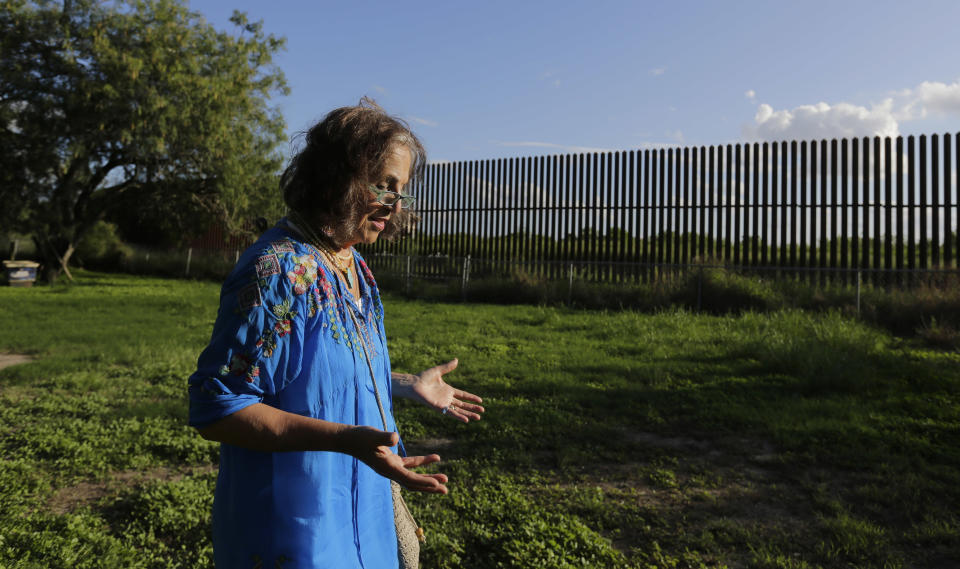
However, for the government to seize property by eminent domain, the property owners need to be compensated. And previously, the primary issue was that “the level of compensation is highly contestable,” according to Felbab-Brown. “That’s why you have the cases that go back to the George W. Bush administration that are still in process.”
Terence Garrett, a professor at the University of Texas Rio Grande Valley told Yahoo Finance that in 2008, the federal government wanted permission to enter the university’s Brownsville campus property and build an 18-foot high bollard fence. The university’s president opposed it.
Both sides ended up compromising: The university built a 10-foot-high fence instead of bollard fencing that the government wanted. Nevertheless, similar situations exist and more would arise with any expansion of border building.
“When I testified to the U.S. Senate Governmental Affairs and Homeland Security Committee,” Terence Garrett, professor at the University of Texas Rio Grande Valley told Yahoo Finance of his 2017 testimony, “there were 320 of those tracts [of private land] in dispute where the land owners sued the federal government for a variety of violations of the 5th amendment right.”
‘Border walls are fool’s gold’
No matter the outcome of Trump’s quest, a border barrier may not be a lasting solution when it comes to drugs coming into the U.S. from Mexico.
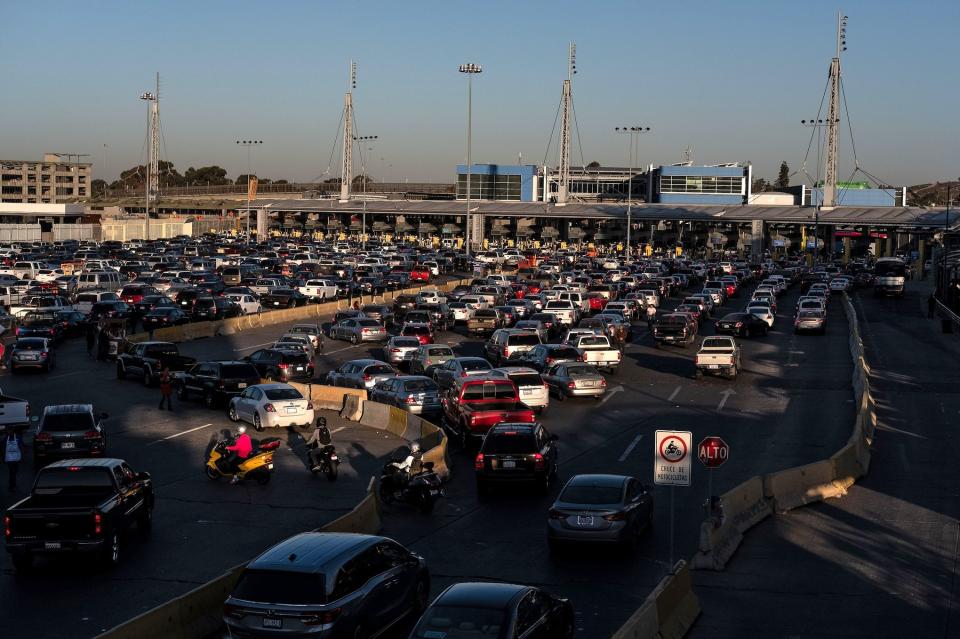
“The wall will have some effect, and maybe a lot, on illegal alien migration, but it’s going to have very little effect on the flow of drugs,” former DEA Special Agent Jack Riley recently told Yahoo Finance. “We know that 80% to 90% of hard narcotics — heroin, fentanyl, methamphetamine, cocaine, and marijuana — come through our existing checkpoints.”
Garrett agreed.
“The border wall is easily defied by transnational criminal organizations moving drugs and migrants by simply driving [drugs] through the ports of entry along the border using hidden compartments” in cars or trucks, he said.
“Border walls are fool’s gold,” Garrett added.
Nevertheless, according to Garrett, nothing has really changed since the Secure Fence Act more than a decade ago. To the people near the border, any barriers being built between them and Mexico equate to a wall.
“Nancy Pelosi, the Democrats, and Chuck Schumer are mistaken,” Garrett said, adding that what the Trump administration is attempting to do is what previous administrations did.
“And for us down here, effectively that means a wall.”
Michael B. Kelley contributed to this report.
READ MORE:
Former DEA agent: Trump's wall will 'have very little effect on the flow of drugs'
Analyst: President Trump 'is going to go to Plan B' for a border wall
Follow Yahoo Finance on Twitter, Facebook, Instagram, Flipboard, LinkedIn, YouTube, and reddit.

 Yahoo Finance
Yahoo Finance 